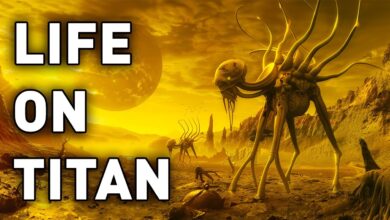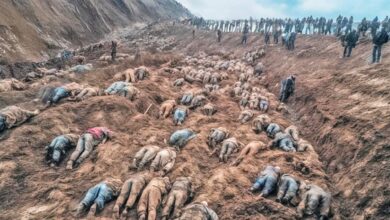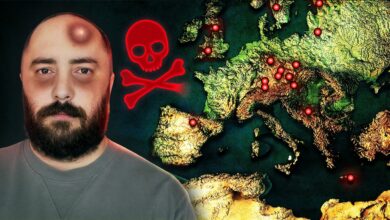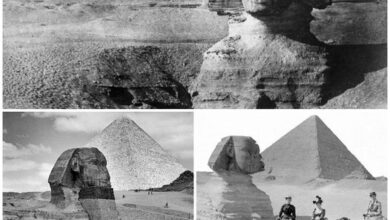Kazakhstan: the tomb of the Scythian Prince

More than 2,000 years ago, the legendary Scythian horsemen left their mark on the Central Asian steppes, but they had no cities or palaces. What they left behind were kurgans, buried with precious treasures. An expedition is now excavating a Scythian prince’s tomb in Kazakhstan, hoping to uncover secrets about the culture and life of these warriors.
The expedition, made up of more than 40 researchers from France, Italy and Kazakhstan, camped out for two months to excavate the tomb, which has been known for more than a century but has never been studied. Led by Henri-Paul Francfort and Zainolla Samashev, the team chose to excavate at a kurgan located in the coldest part of the Bukhtarma Valley, where they hoped to find the body of the Scythian prince, although the tomb had long been plundered.

Although the tombs were robbed, artifacts such as gold ornaments and horse carcasses were found intact. These objects reveal the excellent craftsmanship of the Saka, a tribe related to the Scythians, and have helped researchers reconstruct their culture. Items such as necklaces, elaborately decorated horse noses, and ancient saddles have also been discovered, revealing their remarkable development in horsemanship.
However, the most important thing for researchers was the discovery of the body of the Scythian prince. Traces of the body suggest that it may have been preserved under the frozen ground, despite being robbed. By analyzing the artifacts and remains, researchers hope to shed more light on the lives, rituals, and culture of the Scythians, a people who lived between the Greek, Persian, and Chinese civilizations.
The Scythians, who first domesticated horses around 1000 B.C., were pivotal in shaping nomadic life on the vast Eurasian steppes. Mastering these animals, the Scythians became fierce warriors and expanded their territory, influencing armies like the Persian and Greek. Horses were central to their culture, inspiring art and military strategy. Carvings found in their tombs depict horses, and some show strange horned creatures, suggesting a connection to wild animals and spiritual rites. The presence of gold-leaf horns on a horse’s skull hints at ancient nature worship rather than traditional deity worship.
The tomb where the prince and 13 horses were found is being carefully excavated using a freezing technique to preserve the delicate remains. Scientists remove blocks from the frozen ground, cataloging the artifacts and wrapping the fragile bones for transport. The prince’s remains, along with another body identified as a woman, are being analyzed in laboratories. The second body was likely buried after a tomb raid, and the woman’s skeleton, tattooed like the Scythian chiefs described by Herodotus, suggests that women in their society held a higher status than in sedentary civilizations. The examination also reveals that the horses, all male stallions, were sacrificed during the prince’s funeral, indicating their importance in Scythian rituals and economy.
In Kazakhstan, a team of archaeologists is piecing together the remains, using animal bones and teeth to reconstruct the horses’ appearance and understand their role in the ceremony. The horses were aged 16 to 20 years, showing signs of wear from a lifetime of being ridden, and were slaughtered with a blow to the head during the funeral. The findings align with ancient petroglyphs that have depicted similar scenes for thousands of years.
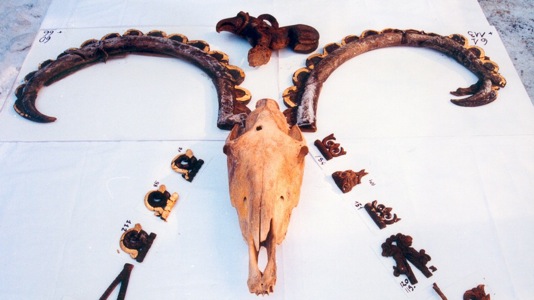
The prince’s remains are considered a direct link to the Scythians, and for many Kazakh scientists, they are not just a relic of the past but a cultural ancestor. The “Golden Man,” another famous Scythian prince discovered in 1971, is a national figure in Kazakhstan, symbolizing the strength and richness of Scythian civilization. Comparing these artifacts with others from the region allows researchers to map the spread of Scythian culture, offering deeper insight into their advanced craftsmanship, burial practices, and the central role of horses in their society. Through this study, scientists are working to unravel the mysteries of this ancient civilization, piecing together the life and times of the Scythians, their religious practices, and their contributions to the nomadic culture of the steppes.
The Altai prince’s tomb reveals evidence of a detailed embalming process, including a large opening in the sternum for organ removal. This incision was likely made using a fine knife, and marks on the bones indicate the removal of the skin and muscle tissue. This preservation method has been previously observed in other Altai mummies, where flesh was carefully removed to protect the body. Researchers also discovered three fine strings near the spinal column, which may have been used in the embalming process, and the bones show signs of delicate work, hinting at a ceremonial procedure.

The horse pit, containing an amalgamation of animal remains and artifacts, was carefully excavated with a focus on precision. The gold leaf and wooden pieces found within were removed with great care, as even slight pressure could cause the artifacts to disintegrate. This meticulous process allowed archaeologists to record the exact placement of each item used to decorate the horses, offering insight into the Saka’s elaborate burial rituals.
The horse’s decorative ornaments, including representations of real and mythical animals like horned lions and griffins, shed light on ancient Saka beliefs. The artwork, often depicting predatory behavior, suggests a violent world filled with danger and spirit-based mythology. This artistic expression is not just a reflection of their environment but also a stylized portrayal of nature, with Saka artists striving to create perfect, symmetrical forms. These animals likely had symbolic significance in their cosmology and spiritual practices.
As the prince’s skull was reconstructed, forensic analysis revealed that his death was caused by a blow from a blunt object, resulting in significant cranial damage. Further analysis showed signs of trepanation, an ancient surgical procedure, which had been performed but was abandoned due to the prince’s death. This violent and painful death aligns with Scythian art, which often depicts brutality, internal conflicts, and human sacrifice. These themes may have been used to emphasize the harsh reality of life among warring tribes, where such violence was commonplace.
The Scythians’ art, crafted in gold and other precious materials, often depicted violent and mythical creatures. These representations, along with the burial practices, suggest a belief in the afterlife and the continuation of rituals after death. The prince was buried with numerous artifacts, including gold jewelry and weapons, and accompanied by 13 horses, arranged in two layers, symbolizing his journey to the afterlife. The horses were likely sacrificed as part of a ceremonial ritual to honor the deceased.
The research also connects the Altai discoveries with other Scythian artifacts from across Eurasia. These include motifs that resemble those found in Persian and Chinese art, indicating cultural exchanges between the Scythians and these civilizations. The Saka, who lived in a region bordered by Persia and China, were part of a vast network of trade and artistic influence. The similarities in artistic styles, such as the symmetry and spiral patterns found on the artifacts, suggest that the Altai region was part of a larger artistic community that spanned from Mongolia to the Danube.
DNA analysis of the prince’s remains revealed a genetic link to a woman buried nearby, who may have been his mother. This discovery, along with the analysis of parasites found in the remains, suggests that the Scythians traveled extensively, possibly covering thousands of kilometers, and had contact with different regions and cultures. This long-distance travel is also reflected in the art and artifacts found in the Altai region, which show signs of influence from both Persian and Chinese cultures.
These discoveries provide new insights into the Scythians’ culture, their beliefs, and their artistic traditions. The Altai region, once a vibrant cultural hub, played a central role in connecting different civilizations across Eurasia. The research into the Scythian artifacts continues to reveal the complexity of this nomadic society, their spiritual practices, and their interactions with neighboring cultures, offering a window into a long-lost world of rich traditions and shared heritage.





